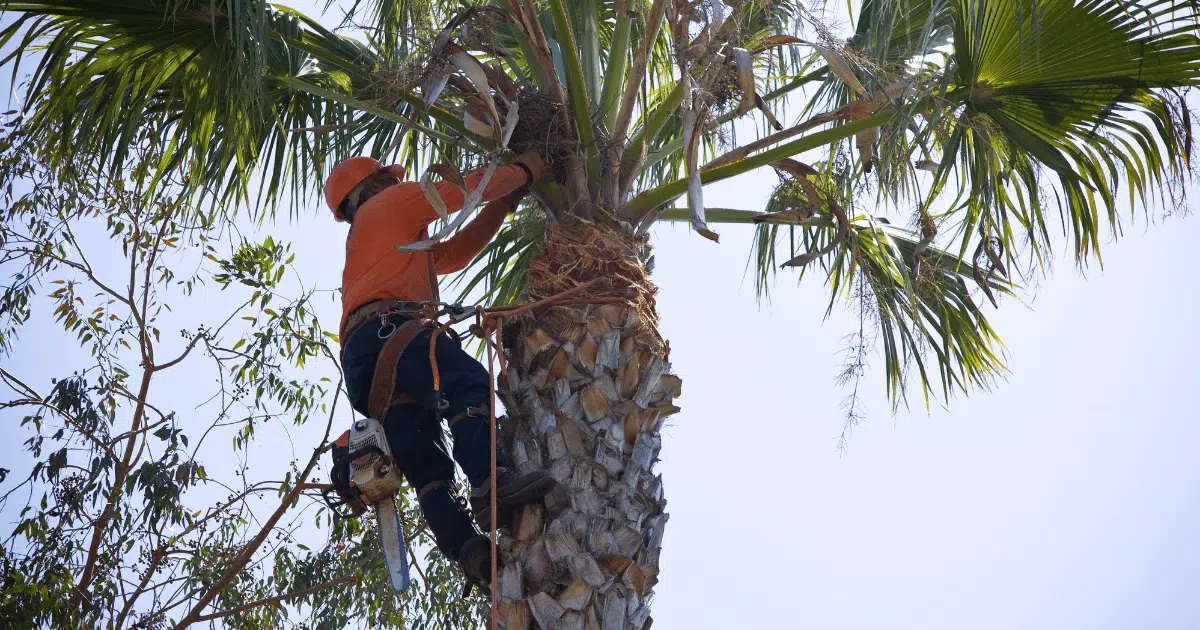Simplifying Tree Trimming Costs: How Much Does It Cost to Trim a Tree?
Pruning or trimming your trees is critical to maintaining a healthy and aesthetically appealing landscape. However, one question often lingers in the minds of tree owners: “How much does it cost to trim a tree?” It’s important because understanding the cost can help you plan and budget your tree maintenance tasks. This blog will delve into the key factors influencing tree-trimming costs and provide a roadmap to understanding what you might expect to pay.
Understanding Tree Trimming
Tree trimming, often pruning, involves removing specific branches or stems to benefit the whole tree. It’s not just about making a tree look good; proper tree trimming can enhance the tree’s health, improve fruit production for fruit trees, and protect your property by removing dangerous limbs.
Factors That Affects Tree Trimming Cost
Below are the primary factors that influence the cost of tree trimming:
Tree Size and Type
The larger the tree, the more work it requires to trim. As a result, tree size is one of the most significant factors influencing the cost. For instance, trimming a small tree under 30 feet costs around $150, while a 60-70 foot tree costs upwards of $700.
Different species of trees have different growth patterns and densities. For instance, pine trees typically have less dense branches than an oak tree making them easier and cheaper to trim.
Condition of the Tree
A tree’s health and condition can also affect trimming costs. For instance, a diseased or dead tree can be dangerous to trim. It may require specialized equipment or extra safety measures, increasing the cost.
Location of the Tree
The tree’s location plays a significant role in determining tree trimming costs. If the tree is near power lines or buildings or is difficult to access, it may require more effort or special equipment to trim safely, hence a higher cost.
Trimming Time and Complexity
The complexity of the job, including the number and size of the branches that you’ll need to be removed, will also impact the cost. Additionally, rush jobs or after-hours services will generally cost more.
How Regular Tree Trimming Can Save You Money
Regular tree maintenance isn’t just good for the trees—it’s good for your wallet, too. Routine trimming can prevent problems like disease, pest infestations, and overgrowth, which might require expensive remedial treatments.
Moreover, timely trimming can prevent branches from falling and causing property damage or injuries, which could lead to substantial liability costs. Thus, regular trimming is an investment in preventive care that ultimately saves money in the long run.
Tree Trimming Service Versus Tree Pruning
While the terms are often used interchangeably, pruning and trimming differ. Pruning usually refers to the removal of dead or diseased branches. It is done primarily for the tree’s health or fruit production. Trimming, on the other hand, is done to maintain the tree’s shape and aesthetic appeal. The cost difference between the two can vary based on the complexity of the task and the tree’s condition at the time of service.
DIY Tree Trimming vs. Hiring Professional Tree Trimming A Cost-Benefit Analysis
Trimming trees by yourself may seem appealing due to potential cost savings. However, that might only sometimes be the case. When DIY tree trimming, you must factor in the cost of necessary tools, safety equipment, and waste disposal.
Moreover, property damage or personal injury is risky, especially if you’re dealing with large trees or trees near buildings or power lines. Such accidents could lead to substantial unexpected costs.
On the other hand, hiring professionals might seem expensive upfront. Still, it offers value in terms of expertise, safety, and efficiency. Professional tree trimmers have the training, experience, and equipment to do the job right and safely, which can provide peace of mind.
Hidden Risks of DIY Tree Trimming
Doing your own tree trimming can seem like a great way to save money and can certainly feel rewarding. However, it comes with a significant set of risks that you may not have considered:
- Personal Safety: Tree trimming often involves climbing heights and handling heavy equipment, which can lead to accidents if not done properly. According to the U.S. Consumer Product Safety Commission, about 36,000 people visit emergency rooms yearly due to chainsaw-related accidents.
- Property Damage: Overhanging branches can be unpredictable when cut, potentially causing damage to your home, car, or other parts of your property.
- Tree Health: Incorrect trimming can lead to disease, pest infestation, or even death for your tree. Cutting in the wrong spot, at the wrong time of year, or simply making too many cuts can lead to irreversible damage.
What about the hidden costs if you avoid all these risks and successfully trim your tree? Tools, safety gear, waste disposal – it all adds up. Plus, there’s the value of your time. Depending on the size and condition of your tree, trimming could take up an entire weekend or more.
Key Takeaways
Understanding the factors that influence tree trimming costs can help you budget appropriately and know what to expect when you hire professionals for the job. While price is an important factor, it’s not the only one. Hiring an experienced, qualified professional must ensure the job is done safely and effectively.
Discount Tree Service prides itself on delivering top-notch tree services at affordable prices. Contact us today at (480) 495-3518 or (480) 233-7813 for a FREE ESTIMATE on your tree trimming needs.
FAQ
How much does it typically cost to trim a tree?
The average tree trimming cost ranges from $75 to $1000, but this can vary greatly based on the tree’s size, health, and location, among other factors.
Does homeowners insurance cover tree trimming?
Typically, homeowners insurance does not cover routine tree trimming. However, it may cover tree removal or damage repair costs if a tree falls due to a covered peril, like a storm.
How often should trees be trimmed?
On average, trees should be trimmed every 3 to 5 years, but this can vary based on the tree species and health.
Is tree trimming cheaper in the winter?
Many tree services offer lower prices during the winter when demand is lower.
Can I trim my neighbor’s tree if it’s growing into my property?
You typically have the right to trim branches hanging over your property line. However, it’s always best to speak with your neighbor first or consult with a local arborist or lawyer to understand your rights and local laws.









0 Comments